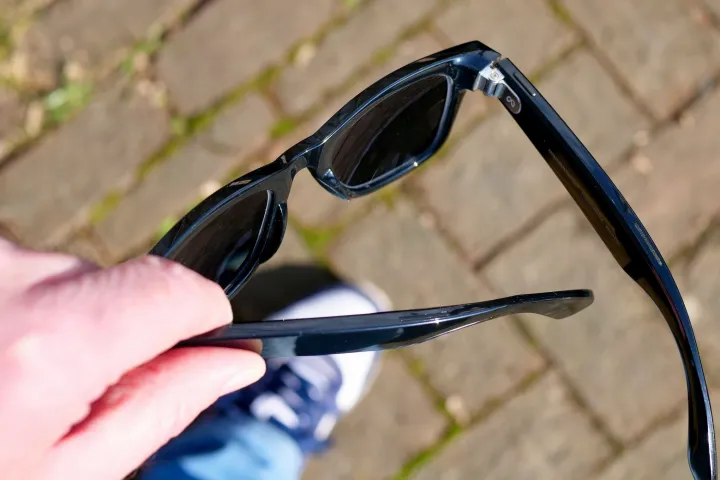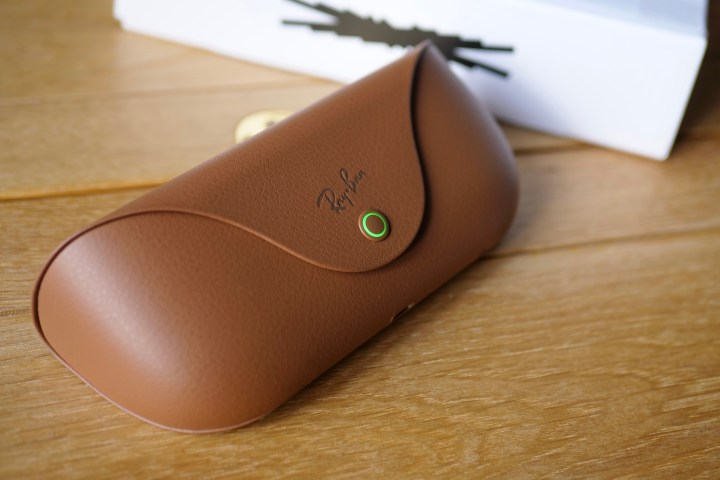
I wear glasses so I can see what I’m doing. This means I have to wear them all the time, so they have to be light, comfortable, and stylish. Smart glasses made over the past few years have never really ticked all these boxes, and getting prescription lenses in them was usually a pain, too. So much as I wanted to, I could never consider living with them as I do my non-smart pair.
But then the Ray-Ban Meta smart glasses came along. Could they be the first pair I could wear all the time? I think so, and I’m embarking on a long-term test to find out.
What makes me think they will work?

The Ray-Ban Meta are smart sunglasses, right? You’re probably not alone in thinking this is the case, but you can get clear prescription lenses for them, and that’s what I’ve done. It’s all very well seeing people test Ray-Ban Meta as sunglasses, but this doesn’t fit into my life very well, and I’m sure many others feel the same. I live in the U.K., where sunshine is rationed. I don’t only want to enjoy the Ray-Ban Meta on the few days when I must wear sunglasses. I want to know what they’re like on the other 300 dreary days where I don’t.
They have to look good with clear lenses, but as I also need sunglasses, I chose the Transitions lenses, which go from clear to dark depending on the lighting conditions. It means I can wear them inside and out of the house without either being plunged into darkness or blinded by the sun. For reference, I’m wearing the medium-sized, Shiny Black Wayfarer shape with the green Transitions lenses and my own varifocal prescription. It’s this level of customization that initially made me think the Ray-Ban Meta really could replace my regular glasses.

Beyond the customization, the decision to use the classic Wayfarer design is inspired, as the shape tends to suit most faces. The weight is sensible at 47 grams, which, while heavier than my usual 24-gram glasses, isn’t unmanageable. Then there’s the cost. The last pair of regular non-smart glasses I purchased with varifocal lenses cost 1,000 British pounds, which is about $1,280 — with the lenses making up two-thirds of the price.
The Ray-Ban Meta cost the same. You can obviously spend a lot less on glasses, but not if you want a good design and the best and thinnest possible lens. The fact the Ray-Ban Meta aren’t more expensive than a non-smart pair of this quality also makes them a viable option.
One week in, and things are looking good

When I collected the freshly reglazed Ray-Ban Meta from my optician and tried them on with the clear lenses, it was a bit of a shock. The Wayfarer design is much bolder than my other glasses, and they certainly make a statement. However, they don’t look out of place, comically large, or much like a piece of tech at all. At a glance, it looks like I’m wearing a normal pair of Wayfarers with clear lenses — until I’m not, and they look like sunglasses. If it’s good enough for Johnny Knoxville, it’s good enough for me.
But why will this make what I’m planning different from a straight review of the Ray-Ban Meta as sunglasses? Wearing glasses all the time is very different from wearing sunglasses only when you leave the house on a sunny day. The best glasses are the ones you forget you’re wearing, as if there is any irritation at all, it becomes a constant problem you can’t stop thinking about. Switching from my usual pair of barely-there Gottï Switzerland frames to the tech-enhanced Wayfarers is me jumping in the deep end to help inform the millions of other glasses-wearers if it’s worth doing the same. Plus, I love the potential of wearable tech in general, whether it’s on my face, wrist, finger, or body.
This is the first step in my life with Ray-Ban Meta.
How has it been after a week? I can definitely feel the Ray-Ban Meta on my face, and they do get a little fatiguing after a full working day of wearing them. But for the most part, I do forget I’m wearing them. I’ve noticed one of the nose pads tends to rub a little, but this has diminished as they “wear in,” and I know I adjust them on my face more than my other pair to find the comfortable sweet spot. But they aren’t too heavy, and they don’t slip about or feel poorly balanced. I haven’t really needed to take them off until I’m about five or six hours into wearing them. At that point, the bridge of my nose has usually had enough. Will this ruin my experiment before it has really started? Let me come back to that.
Are they smart enough?

Fit and comfort are crucial, but I’m mostly wearing the Ray-Ban Meta because of the technology and the features. As such, it must all be useful, enjoyable, and compelling. Otherwise, I’ll just wear my normal glasses. I was attracted to the Ray-Ban Meta for two primary reasons: I wear headphones a lot and I enjoy taking photos a lot, too. Having access to a camera and a pair of speakers on my face all the time, and hands-free, really appealed.
But to get to this point did require getting the “top-spec” and therefore priciest Ray-Ban Meta, transition lenses and all, and I know they won’t be as sonically impressive as a pair of great headphones or take photos as well as the Samsung Galaxy S24 Ultra. So why go to all this trouble and expense? I don’t expect the Ray-Ban Meta to replace either of these other products. I want the smart glasses to complement them, add convenience, and give me another creative avenue to explore with the camera.
It’s all I’ve ever wanted from smart glasses, but this is the first time the crucial design, lens, and comfort elements have all come together with the right tech in a way that suits me. Am I going to wear the Ray-Ban Meta all the time and abandon my other pair of glasses? At first, this was my intention, but even just one week into owning them, I can see this probably isn’t going to work. I look at it like wearing a suit to work and then coming home and putting on sweats. The Ray-Ban Meta are perfect for days when I’m out and about, indoors and out. But when I want to sit and relax at home, or I’m simply staring at a screen in my office, my lighter, less noticeable, non-smart glasses that don’t need charging are by far the better choice.
Living with smart glasses

But even with this decision to not ignore my other glasses entirely, I’m still so impressed with the Ray-Ban Meta’s wearability and the way they become almost unnoticeable after a short time of wearing them. I’m not as all-in with the experiment as I originally planned, but it’s likely to be a 70/30 split in favor of the Ray-Ban Meta over my regular glasses going forward. It’s an exciting time.
The Ray-Ban Meta have avoided the majority of the problems that stopped me from trying out previous smart glasses as my main pair, and they are set to be the first pair of smart glasses I can genuinely wear almost all the time. But now the test of whether they’re genuinely helpful and the camera is creatively exciting begins, how Meta continues to improve the functionality, and also along with whether they remain this way over time — or if they don’t have the longevity to hold my interest.
This is the first step in my life with Ray-Ban Meta, and I’ll be writing about my journey with them going forward.



